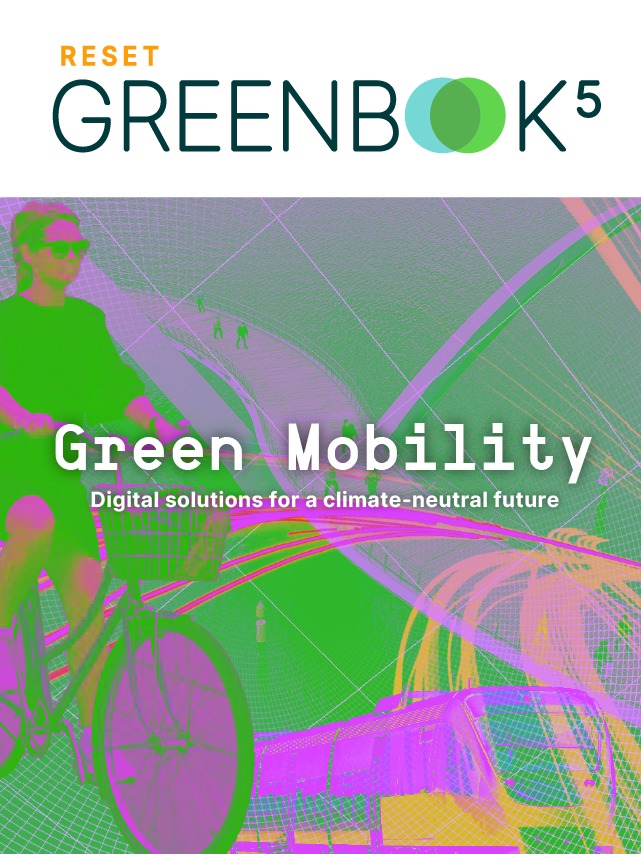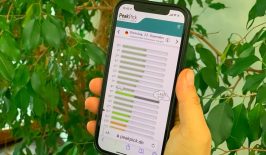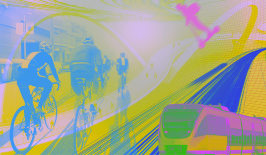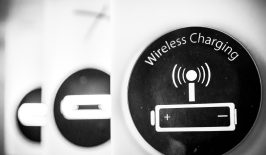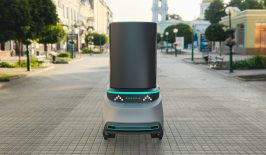Katja Diehl is a prominent moderator and keynote speaker on the topic of mobility in Germany. She published the book “Autokorrektur – Mobilität für eine lebenswerte Welt” (Car Correction – Mobility for a Livable World), is a guest researcher at the WZB Berlin and advises, among others, the Austrian Climate Protection Minister Leonore Gewessler and Transport Minister Winfried Hermann in the German state of Baden-Württemberg.
For Diehl, it is clear that a real mobility turnaround can’t be achieved without turning away from motorised individual transport. In this interview, we talked to her about what we can all gain from a future without cars, how we can get there and where digital technologies can help.
RESET: Katja, for a climate-friendly, inclusive mobility transition, the main thing is that we should completely rethink locomotion, right?
Katja: By looking at mobility in a way that is completely detached from means of transport, I first try to look at why people set off in the first place, and question how we could become so dependent on cars. We ourselves have created the situation in Germany in which 49 million cars move around for 45 minutes a day on average, so reducing this is a huge opportunity. In a positive sense, I believe that behind the cars lies paradise, in rural areas as well as in the city. I would like to give the spaces back to the people and create livable spaces.
I believe that mobility, as we have it today, has simply been thought of in the wrong way due to car-centrism. Many people are not in cars because they are car fans or because they like driving, but because society does not offer them an alternative. Safety, accessibility and affordability are the keywords here.
If you look at the CO2 emissions in the different sectors, it shows that they are at least going down slightly, except in industry, but not in transport. What do you say are the reasons for this?
I think we live in a car ideology. The car is being elevated to a pedestal that it simply does not deserve. The transport sector under Volker Wissing is even recording rising emissions. We have the Paris climate goals, we have the Climate Protection Act, we have the Federal Constitutional Court, which has said that you must not do anything that harms future generations – it’s outrageous that a sector can escalate like this. 61 percent of CO2 emissions in the transport sector come from private cars. But it is precisely these that we are not addressing. We are beating around the bush. The transport sector should be reducing its emissions 14 times faster than it is doing now.
Let’s take a look at Austria. There, I accompany the climate protection minister in the advisory council. She said two and a half years ago that we would now look at all major construction projects. She and her ministry took a year to do this and worked together with scientists. The result is that a certain motorway and a certain tunnel will not be built because it is clear that the CO2 targets will be missed.
Green Mobility – Digital solutions for a climate-neutral future
Autonomous vehicles, e-mobility, AI-controlled traffic planning, new modes for moving from A to B — what will the mobility of tomorrow look like?
We present the digital solutions being proposed for climate-neutral transport and logistics and discuss the new challenges of “digital mobility” in this dedicated special feature.
Where do you see the reasons for this defensive attitude in Germany?
I think it is a small minority that is very loud. There is the so-called revolving door effect. That’s what you call it when people go from politics to industry and back again. This also happens a lot in the field of mobility, there are certain complications.
It must change. But that is being refused right now I see as a great danger that we have really taken the wrong path economically.
What do you think it will take for transport to move towards climate neutrality?
I would really see the biggest lever right on our own doorstep, which is to look for people who want to change things just like I do, to become climate resilient and save CO2. We need both in the meantime because we have lost so much time. I have received letters from people who say that they have been demanding cycle paths in rural areas for ten years so that their children can get to school. I think being vocal about that is the right way to go.
We should of course be science- and fact-based, but I think we have been too polite for too long. How are we going to convince with facts? For example, simply cycling to school with children protected as a group as Kidical Mass. These are great pictures, nobody says they don’t want that. The ideas are all there already. We have lost so much that we can get back. I see so many opportunities to create something beautiful.
From the example you gave, would you say that your main concern is to create different, positive images at the local level, and also to change the narratives?
We need new stories, definitely. For example, if people always say that (Berlin’s) Friedrichstraße was closed, then I would say, no, Friedrichstraße was opened up for people who can now also use the street. Or also to say, a car park is something for me that has trees, that is green. Today’s car park is mainly a car parking or storage area.
And maybe I also need to question which narratives I adopt and why I accept that I need a holiday twice a year because the city stresses me out so much. But where does the stress come from? Of course, I must like living with many people in a small space. But the stress also comes from traffic, because it robs us of space. I always invite people to tell other stories and say, there’s a lot to gain. The loss is far too small compared to the gain we could have.
Smaller, local actions are certainly important steps toward convincing more people of the need for a change in mobility. At the same time, we are running out of time to quickly reduce CO2 emissions. What do you say to this?
Reducing emissions quickly is really only possible with a determined policy like in Austria, which clearly states that this is our goal, that we have written into the treaty and that we want to be climate neutral at point X. So far, we have not managed to do that in Germany.
I think it is important that we also recognise that many people do not understand the climate catastrophe because they have the feeling that if it were really that serious, politicians would do completely different things. I think these back doors that are being opened again and again are totally bad because of course we are also giving people a false illusion of security.
You’ve already mentioned a few ways in which alternatives can be created. What role does digitalisation play in the mobility transition?
The first rule of the transport turnaround is: to avoid and shorten journeys. The second rule of the transport turnaround is to shift journeys from air to train, and the third rule of the transport turnaround is an improvement through digital measures as well. If we digitise the current system, mobility will remain lacking because it will exclude a lot of people who, for example, will be in a wheelchair in 2023 and won’t be able to get on a bus because it has steps. But, digitalisation can help with accessibility.
I already see many good examples, such as shuttle systems. You don’t have to build stops there, but there is a virtual stop and it is much easier to find if you are guided there. That’s where mobility comes to you, so to speak. The opportunities are definitely there, but all that is only as good as the foundations we create.
There are now many mobility platforms, i.e. apps that combine all mobility offers and show me the fastest or most comfortable way from A to B, making public transport more accessible. In Berlin and other cities, these services are offered by the city’s own transport companies, but large platforms like Google are also involved. Is this a repeat of developments in other areas, and are the large corporations also using it to capture the whole mobility issue?
There are so many details about this platform economy that worry me. I would like to have a European solution where I am sure that the data is in good hands and that good mobility is also designed with it.
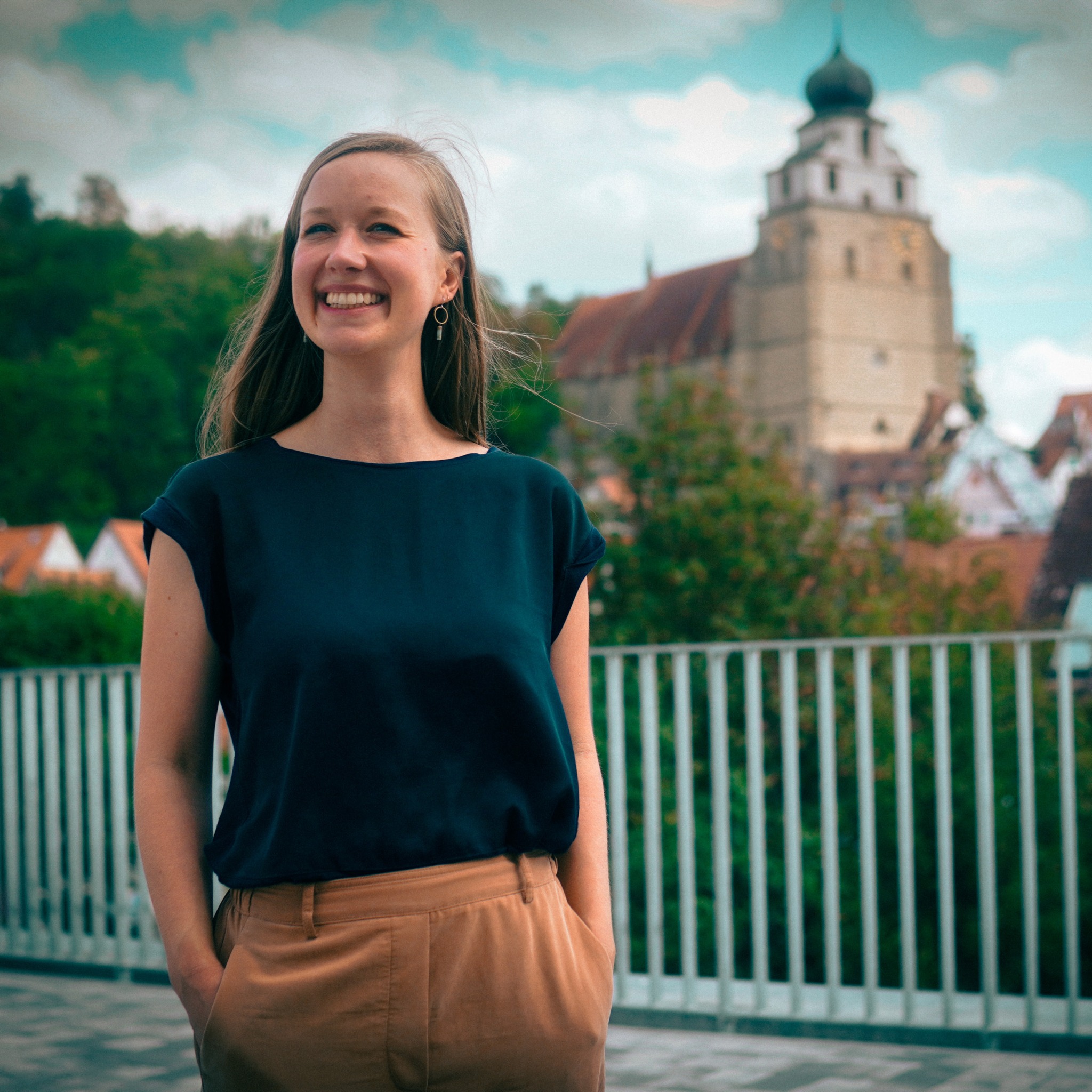
Interview: stadtnavi Herrenberg – local, multimodal and open source for sustainable mobility
The stadtnavi takes the residents of Herrenberg from A to B in a multimodal way. In an interview, project manager Jana Zieger explains why the city chose an open-source approach for its mobility app and how it is helping to advance the mobility revolution.
What does good mobility look like? What is your vision of mobility in the city of the future?
In my vision of Hamburg, I walk out the door and see someone I know across the street. We sit down on a bench and chat for a while, then we drop by the exchange house, bring books there and pick up new ones. There are clothes, lettuce and tomatoes growing in a patch. The area in front of my house is a shared space, maybe there are still a few autonomous cars that are shared, for people who transport things or have disabilities. But actually, muscle mobility is way out in front. I definitely hear children’s laughter and other sounds that I don’t hear at all in the city today, and everything I need is within walking or cycling distance of me.
Then I get on the train and get off at my parent’s house in the countryside. My parents don’t have to pick me up, there are good cycle paths and I get on with my little folding bike. When I visit acquaintances who live in really rural areas, they no longer have three cars either, but one car that is relatively small and charged with electricity from their own photovoltaic system.
Beyond this car, they find many other forms of mobility and there is again a local supply. There are small supermarkets or a supermarket bus, and perhaps also libraries that run along there. Many things have simply been thought of differently, in such a way that people can actually grow old in rural areas and continue to be mobile. The quality of life has increased incredibly, and above all, the quality of life of people is greater than that of cars.
And what role do digital technologies play in your vision of the future?
I think digital technologies can, as they say, nudge you. In other words, they can nudge you to do things differently and come up with other ideas. For example, if the digital technology has learned that someone never rides a bike and then offers the person a voucher for the Stadtrad Hamburg (Hamburg’s bike-sharing system). I think that’s what the 9-Euro-Ticket showed. People who always thought that it would take them a long time to get to their place of work by public transport realised that this was not true at all. And perhaps they realised: I can sit in a vehicle and read, listen to music or close my eyes again. I gain time for myself because I don’t have to hold the steering wheel.
But digital technologies also provide very important infrastructures or make a certain kind of networking possible in the first place, don’t they?
Yes, digitalisation can also help to uncover mobility gaps, for example. When navigation systems are analysed, you can see, for example, that there is only automobility in a place before six o’clock. What is the reason for that? The bus doesn’t leave until six, so maybe we need a call bus system in the time before six. Many routes are simply routine, such as the way to work, and digital systems can offer assistance in planning new services. But I can also withdraw offers, because it really doesn’t need an empty diesel bus. For me, simply optimising this is the great added value of digital technologies.
In your vision, you have drawn a city where almost no motorised vehicles are needed. But what about logistics? In cities where people live, goods have to be distributed.
Yes, that quickly brings us to a system change question. That is also the problem with the mobility transition. It’s also about a social transformation. We definitely have to change our consumption, because if we continue to order as much online as we do now, we’ll be dealing with dead cities. We also need retail as something worth living for and we should definitely strengthen regional consumption.
I would want to shift logistics as a whole to rail. Unfortunately, we have ruined that. After German reunification alone, 4,000 kilometres of rail disappeared. The network has shrunk by 14 percent in recent years — even though passenger numbers and rail freight traffic are increasing.
And things can also be rethought in logistics. Why not have a parcel box delivered somewhere once a week? Why shouldn’t it move autonomously overnight? If you think about distribution to consumers, i.e. supermarket logistics and so on, this could also be done at night with electric trucks, which are automatically quieter vehicles. But I’m also thinking of things we’ve already had, such as the postal bus in rural areas to move passengers and goods.
Katja, thank you very much for the interview!
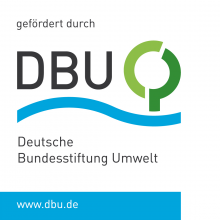
Dieser Artikel gehört zum Dossier „Mobilitätswende – Smart in Richtung Klimaneutralität“. Das Dossier ist Teil der Projekt-Förderung der Deutschen Bundesstiftung Umwelt (DBU), in deren Rahmen wir vier Dossiers zum Thema „Mission Klimaneutralität – Mit digitalen Lösungen die Transformation vorantreiben“ erstellen.
Mehr Informationen hier.

